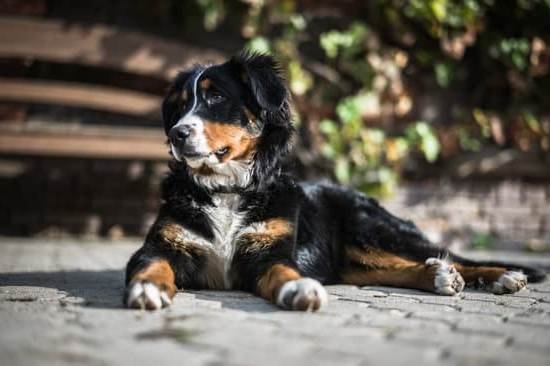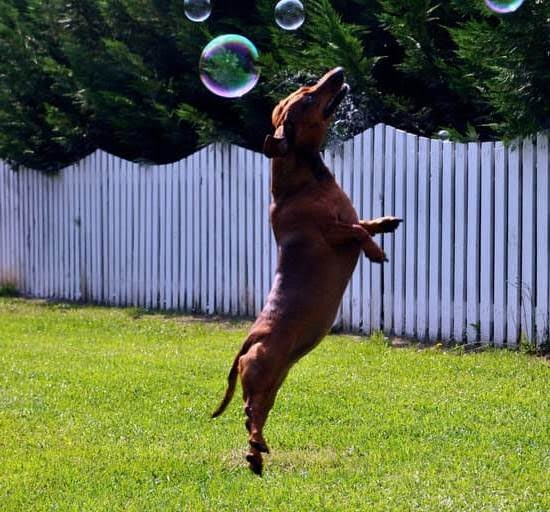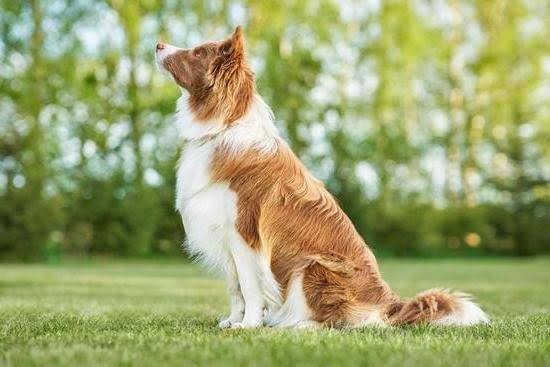Are you wondering, can you potty train a dog with diapers? Potty training a dog is an essential part of pet ownership, and many dog owners have found success in using diapers as part of this process. Whether it’s for young puppies or older dogs, diapers can be a useful tool in aiding the potty training journey.
Potty training can be a challenging task for many dog owners, and the use of diapers can provide assistance in managing accidents and promoting better elimination habits. In this article, we will explore the concept of potty training for dogs and delve into the use of diapers as a potential aid in this process.
Understanding the reasons why some dog owners choose to use diapers as part of the potty training process, as well as the potential benefits and drawbacks, will provide insight into whether this method is suitable for your furry companion. Additionally, we will discuss how to choose the right diapers for potty training and offer practical tips and advice for integrating them into your training strategy.
Understanding the Use of Diapers in Potty Training
Dog owners opt to use diapers as part of the potty training process for various reasons. They may choose this method if they have limited outdoor access for their pets, live in high-rise buildings, or have dogs that are elderly or have mobility issues. Additionally, some dog owners use diapers as a temporary solution while they are working on behavior modification with their pets.
Potential benefits of using diapers in potty training include preventing accidents inside the house, protecting floors and furniture from urine stains, and providing convenience for pet owners who may not be able to take their dogs outside frequently. On the other hand, drawbacks may include potential discomfort for the dog, difficulty in monitoring the dog’s bowel movements, and potential dependency on diapers that could hinder effective potty training.
When deciding whether to use diapers in potty training, it is important for dog owners to weigh the pros and cons based on their individual circumstances. Additionally, consulting with a veterinarian or professional dog trainer can provide valuable insight into whether this method is suitable for their specific situation.
- Reasons for using diapers in potty training
- Benefits of using diapers during potty training
- Drawbacks of using diapers during potty training
Choosing the Right Diapers
When it comes to potty training your dog, choosing the right diapers is an important decision. There are a variety of dog diapers available on the market, each with its own features and benefits. Here are some factors to consider when selecting the right one for potty training:
- Size: Ensure that you choose a diaper that fits your dog properly. A diaper that is too tight can be uncomfortable for your dog, while one that is too loose may not be effective in containing accidents.
- Material: Consider the material of the diaper, especially if your dog has sensitive skin. Look for diapers made of soft and breathable fabric to prevent irritation.
- Absorbency: The level of absorbency is crucial in preventing leaks and messes. Choose a diaper with high absorbency for maximum effectiveness during potty training.
- Disposable vs. Reusable: Decide whether you prefer disposable or reusable diapers for your dog. Disposable diapers offer convenience, while reusable options are more eco-friendly and cost-effective in the long run.
It’s also essential to consider your dog’s specific needs and behaviors when choosing the right diapers for potty training. For male dogs, belly bands may be more suitable, while female dogs may benefit from full-coverage diapers.
When selecting the right diapers for potty training, take the time to research and compare different options to find the best fit for your furry companion. By choosing the right diapers, you can make the potty training process more comfortable and effective for both you and your dog.
How to Use Diapers in Potty Training
Using diapers in potty training for dogs can be a helpful tool in the process of teaching them the appropriate elimination habits. When done correctly, it can aid in minimizing accidents and establishing a routine for your pet. Here are some step-by-step instructions on how to properly use diapers in the potty training process.
1. Introducing the Diaper: Start by familiarizing your dog with the diaper. Allow them to sniff and investigate it to reduce any apprehension when wearing it. Reward positive behavior with treats or praise.
2. Proper Fit: It is essential to ensure that the diaper fits your dog comfortably and securely. A well-fitting diaper should not be too tight, causing discomfort, nor too loose that it falls off easily.
3. Regular Changing: Maintain good hygiene by changing the diaper frequently, especially after your dog eliminates while wearing it. This helps prevent skin irritation and maintains cleanliness.
4. Positive Reinforcement: Use positive reinforcement techniques such as treats or verbal praise when your dog successfully uses the diaper or shows progress in their potty training.
5. Consistency with Training Methods: In addition to using diapers, it is important to continue implementing other potty training methods such as regular outdoor bathroom breaks, crate training, and establishing a consistent feeding schedule.
By following these step-by-step instructions and integrating diapers with other training methods, you can effectively use them as a valuable tool in your dog’s potty training journey.
| Step | Instruction |
|---|---|
| 1 | Introduce the diaper to your dog by allowing them to sniff and investigate. |
| 2 | Ensure that the diaper fits your dog comfortably and securely. |
| 3 | Change the diaper regularly to maintain cleanliness and prevent skin irritation. |
Tips for Potty Training With Diapers
Establish a Routine
One of the most important tips for potty training with diapers is to establish a consistent routine for your dog. Take your dog outside at regular intervals, such as first thing in the morning, after meals, and before bedtime.
This will help them understand when and where they should be going potty. Additionally, use verbal cues or commands to let them know it’s time to eliminate, which can be especially helpful when using diapers as part of the training process.
Positive Reinforcement
Using positive reinforcement is crucial when potty training with diapers. Whenever your dog successfully eliminates outside or in their designated potty area, be sure to praise and reward them with treats or verbal praise. This will encourage them to continue exhibiting the desired behavior. It’s important to avoid punishment or negative reinforcement, as this can create anxiety and hinder the training process.
Consistency Is Key
Consistency is essential when using diapers in potty training. Whether you’re using disposable diapers or washable ones, maintaining consistency in the usage and changing of the diapers is important. Additionally, consistency in your training methods and routines will help your dog understand what is expected of them. Remember that successful potty training takes time and patience, so stay consistent and avoid making frequent changes to the routine or approach.
Common Mistakes to Avoid
When using diapers in potty training for dogs, there are some common mistakes that dog owners should be aware of to ensure a successful and effective training process. One common mistake is using diapers as a long-term solution rather than a temporary aid in the potty training process.
Diapers should be seen as a tool to assist with the training, not as a permanent fix for the issue. It is important for dog owners to have realistic expectations and understand that potty training takes time and consistency.
Another mistake to avoid is choosing the wrong size or type of diaper for your dog. Ill-fitting or uncomfortable diapers can cause discomfort or lead to leaks, which can disrupt the training process and undo progress that has been made. It is crucial to carefully measure your dog and select the appropriate size and style of diaper that will provide comfort and security.
Additionally, one of the most common mistakes when using diapers in potty training is not being consistent with their use. Consistency is key when it comes to any type of dog training, including potty training. If diapers are only used sporadically or inconsistently, it can confuse the dog and hinder progress. Therefore, it is important to establish a routine and stick to it when incorporating diapers into the potty training process.
Avoiding these common mistakes will help ensure that using diapers in potty training is a successful endeavor for both you and your furry companion.
| Common Mistakes | How to Avoid |
|---|---|
| Using diapers as a long-term solution | See them as a temporary aid |
| Choosing the wrong size or type of diaper | Carefully measure your dog and select appropriate size |
| Not being consistent with their use | Establish a routine and stick to it |
Monitoring Progress
Importance of Monitoring Progress
Monitoring a dog’s progress while using diapers in potty training is crucial for the overall success of the training process. It allows the owner to track the dog’s elimination habits, identify any patterns or issues, and make necessary adjustments to the training approach.
Tracking Elimination Habits
One of the key aspects of monitoring progress is keeping track of the dog’s elimination habits while using diapers. This includes noting the frequency and timing of bathroom breaks, as well as whether the dog is successfully eliminating in the diaper or having accidents outside of it.
Making Adjustments as Needed
Based on the progress and behavior patterns observed, adjustments may need to be made to the potty training approach. This could involve modifying the use of diapers, adjusting the timing and frequency of bathroom breaks, or implementing additional training methods to address any challenges or setbacks.
By closely monitoring progress and being proactive about making adjustments as needed, dog owners can ensure that their furry companions are on track with their potty training journey and ultimately achieve successful results.
Gradual Transition
As a dog owner, the ultimate goal of potty training is for your furry companion to develop the desired elimination habits and be able to do so without the use of diapers. While diapers can be a helpful tool in the initial stages of potty training, it is important to gradually transition away from their use as the dog becomes more accustomed to the desired behavior.
One approach to transitioning away from using diapers is to gradually increase the amount of time that your dog spends without wearing them. This can be done by closely monitoring your dog’s behavior and gradually extending the duration between diaper usage.
For example, if your dog typically wears a diaper indoors throughout the day, you may begin by allowing short periods of time without a diaper under close supervision and gradually lengthening these periods as your dog demonstrates improved control over their elimination habits.
It’s also important to reinforce positive behavior during this transition period. Use positive reinforcement such as treats, praise, and encouragement when your dog successfully eliminates in the designated area without needing a diaper. By doing so, you are helping your dog associate the desired behavior with positive outcomes, further encouraging them to continue exhibiting the correct elimination habits even without the use of diapers.
Conclusion
In conclusion, potty training a dog with diapers can be a helpful tool for some pet owners, especially in situations where traditional training methods may not be feasible. Understanding the use of diapers in potty training is important, as it allows for a better grasp on the benefits and drawbacks associated with this method.
It’s essential to choose the right diapers based on factors such as size, material, and absorbency to ensure the best outcome for both the dog and the owner.
Additionally, using diapers in potty training requires a strategic approach. To maximize effectiveness, integrating them with other training methods and being mindful of common mistakes to avoid is crucial. Monitoring progress and making necessary adjustments along the way are also pivotal to achieving success in potty training a dog with diapers.
As dog owners navigate through this process, it’s important to remember that every dog is different and may respond differently to potty training with diapers. Patience, consistency, and positive reinforcement are key elements in this journey. Ultimately, while using diapers in potty training may present its own set of challenges, staying committed to the process can lead to successful results and a well-trained furry companion.
Frequently Asked Questions
Can You Use Diapers to Potty Train a Dog?
While some pet owners may use diapers as a temporary solution when potty training their dog, it is not the most effective method.
Diapers can be used in conjunction with other training methods, but relying solely on them may hinder the dog’s ability to learn how to control their bladder and understand where they should be going to the bathroom.
Do Dog Diapers Work for Pee?
Dog diapers can effectively contain pee and prevent accidents from soiling the floor or furniture. They are particularly helpful for older dogs with incontinence issues or for females in heat. However, it’s important to remember that using dog diapers should not replace proper potty training and positive reinforcement.
What Is the Best Method for Potty Training Dogs?
The best method for potty training dogs involves consistency, positive reinforcement, and patience. Establishing a regular feeding schedule and taking the dog outside frequently, especially after meals and naps, helps them learn where and when it is appropriate to go to the bathroom.
Rewarding good behavior and avoiding punishment for accidents also play crucial roles in successful potty training. Consistency in these methods will lead to a well-trained and housebroken dog.

Welcome to the blog! I am a professional dog trainer and have been working with dogs for many years. In this blog, I will be discussing various topics related to dog training, including tips, tricks, and advice. I hope you find this information helpful and informative. Thanks for reading!





